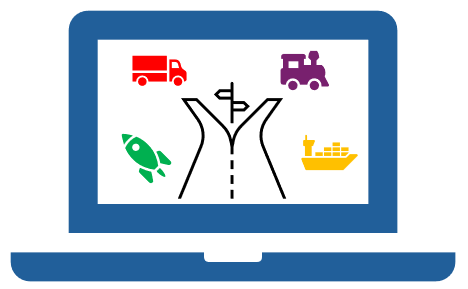Transportation and the Economy
 |
|
||
|
|
UPDATING COST ALLOCATION AND REVENUE ATTRIBUTION Sponsored by the Indiana Department of Transportation (INDOT). PIs: Samuel Labi , Kumares Sinha , Nadia Gkritza Indiana’s road expenditures are financed primarily by highway user fees. The basic principles of highway financing are user-fee equity and statewide revenue adequacy. It is only through analysis of past costs and revenues that Indiana can develop an equitable pricing structure for its road users and an efficient revenue generation system to cover expenditures. Such studies are needed periodically to ensure user equity and revenue efficiency keep pace with changing travel demand and distributions, construction technology and materials, and above all, new/emerging vehicle technologies including electrification. This proposal is based on a request made to INDOT by Indiana’s Legislature, to update Indiana’s 2016 Cost Allocation Study. The goal is to measure/predict/address the impacts of alternative-fuel technology (particularly, electric vehicles) on Indiana’s highway revenue adequacy and equity. Completed 2024 |
||
|
|
LAST MILE DELIVERY AND ROUTE PLANNING FOR FREIGHT Sponsored by the Indiana Department of Transportation (INDOT) Planning for growth through capacity addition requires anticipation of future needs, driven by the rapid growth in Indiana of manufacturing facilities, impacts of autonomous long and short haul delivery hubs, locations for accumulation of trucks for platooning and other freight-related growth initiatives. We will develop a scenario based planning tool that will explore last mile demand scenarios in anticipation of future demand. Data from existing INDOT and local sources will be integrated into the tool. The research team includes faculty and students from the Krannert School of Management in addition to the STSRG. Completed 2022 |
||
|
|
ECONOMIC RESILIENCE AND RECOVERY IN THE U.S. GREAT LAKES REGION Sponsored by the Economic Development Administration (EDA) The Great Recession had wide-ranging impacts that were felt nationwide, more so in some regions than in others. The way that regional economies are able to recover from economic shocks is a concept known as regional economic resilience. The purpose of this project is to study the impact of transportation on economic resilience in the Great Lakes, with a specific focus on two Indiana regions: Northwestern Indiana and Southeastern Indiana. Focus groups will be conducted with people living in those areas alongside data analysis in order to better understand what role transportation and infrastructure plays in regional economic resilience. A web tool allowing people to explore the project's findings and understand how transportation impacts their local economic resilience will be developed. The research team includes several members of the Purdue Center for Regional Development (PCRD). Completed 2022 |
||
|
|
INCORPORATING ECONOMIC RESILIENCE INTO INDOT'S TRANSPORTATION DECISION-MAKING Sponsored by the Indiana Department of Transportation (INDOT) The objectives of this project were to develop a resilience index to better inform stakeholders of the comparative economic resilience of regions in Indiana with respect to planning the implementation of potential transportation projects and develop a spreadsheet tool for INDOT's Asset Planning & Management Division for assessing regional economic resilience and vulnerability. Completed 2019 |
||
|
|
ECONOMIC DEVELOPMENT IMPACTS OF TRANSPORTATION STRATEGIES Sponsored by the Indiana Department of Transportation (INDOT) This project was a multi-year effort that produced three separate reports on this topic:
Completed 2019 |
||
|
|
ECONOMIC DEVELOPMENT IMPACTS OF TRANSPORTATION SYSTEM MANAGEMENT AND OPERATIONS STRATEGIES The increasing trend of nonrecurring traffic congestion caused by crashes, disabled vehicles, work zones, adverse weather events, and planned social events has been a concern for transportation planners and traffic engineers. Given funding constraints, seeking effective strategies from system management and operations perspective seems to be a promising solution compared to implementing tradition capacity expansion projects. Transportation System Management and Operation (TSM&O) strategies have been widely adopted by state agencies and deployed at different scales. Past research has demonstrated the financial viability of TSM&O strategies, but there has not been a study to date on their contribution to a region's economy. This thesis proposes a practical step by step methodology that can be used by transportation practitioners and researchers for evaluating the economic impacts of TSM&O strategies. Completed 2016 |
||
